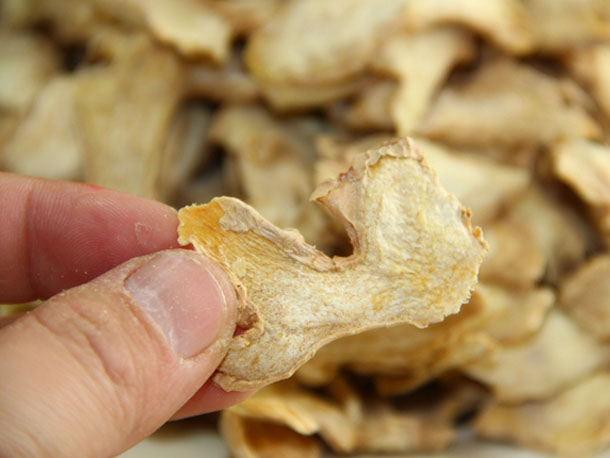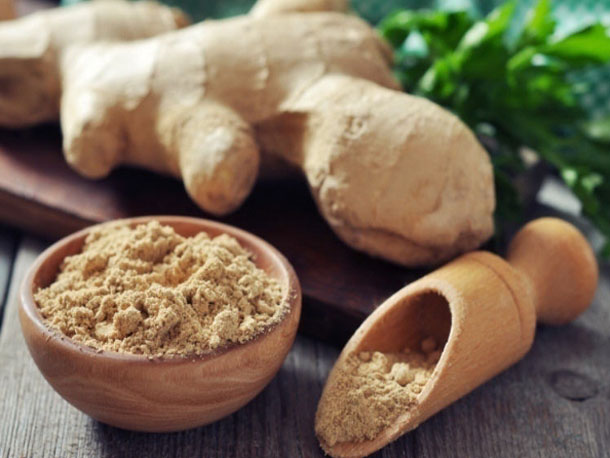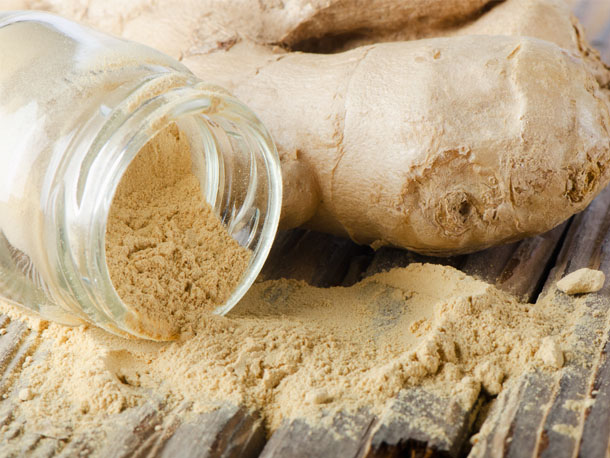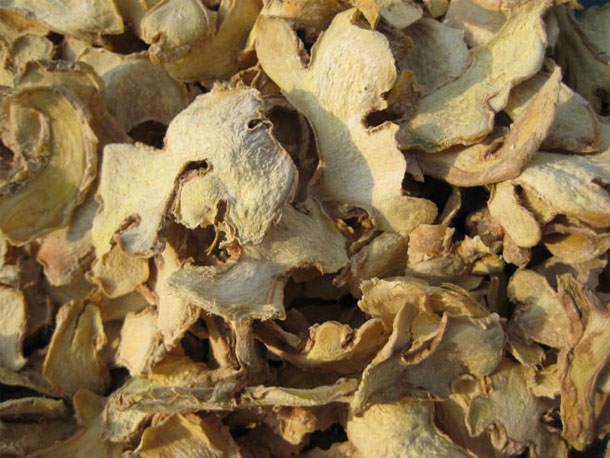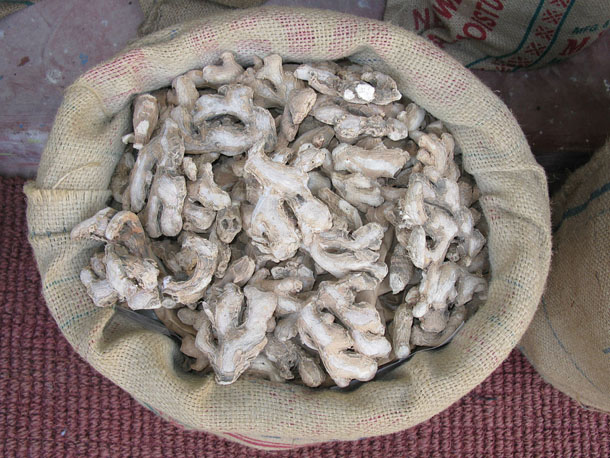Tightening supply underpins Nigerian ginger
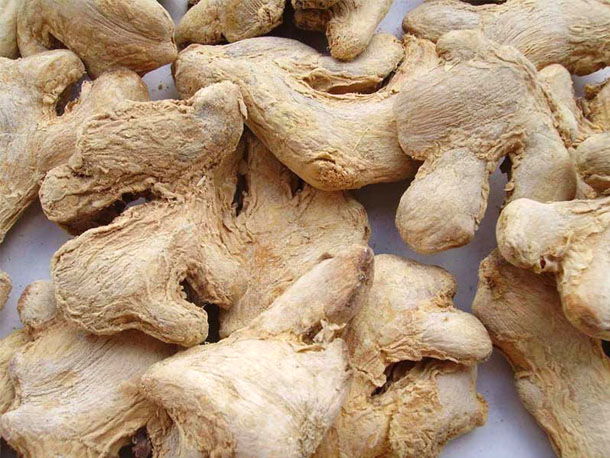
Nigerian dried ginger prices have shown renewed upward pressure of late due to problems with the more recent phases of harvest.
The country’s November/December crop was quite successful but the later January/February crop has been summed up as being a failure.
In a March 14 market report French trader Sivanil/Touton Ingredients observed that “the last meaningful rain in southern Kaduna was in the last week of November.” Moreover, the company noted that this was followed by the harmattan (desert winds) in the second week of November, which further spoilt the prospects for the crop in early 2014.
It was felt that Nigeria might have lost about 20% of the crop due to the adverse weather.
Robert Brandler of Tillbrook Products agreed that a good harvest in November and December was followed by problems more recently. “It’s in the last three to four weeks it has really started to tighten. Also, it seems that the Ethiopian crop is not very good this year. There is a lot of cross border trade going on as the borders are open now,” he said.
Production problems were exacerbated in January by wandering cattle.
There is currently a lot of tension in Nigeria’s ginger growing areas between wandering Fulani herdsmen. Historically, many of these herdsmen lived in the northeast of Nigeria but they have fled from there in the last few years due to all the disruptions from terrorist activity. They particularly like the ginger areas as there is a lot of fertile grass there, which is grown to help protect the ginger crop.
Over the Christmas period Nigerian farmers stop harvesting and then switch to harvesting other crops such as sorghum from January. Typically, the ginger farms are left unattended during these times and the Fulani herdsmen invariably take advantage of this, sending their cattle in to feed off the dried grass.
Unfortunately, this can cause hoof damage to any of the ginger growing close to the surface, causing the root to dry out too much, and go rotten.
Hence, trade reports have indicated that there is a lot of damaged Nigerian ginger this year. It is thought that this might be mixed with better quality ginger for sale on local markets.
Sivanil explained that local buying agents were unable to gather enough material for storage to meet the demand during the season. Importers from India, Mali and Chad had been among those scrambling for what was left of the crop.
The company viewed prices for Nigerian split dried ginger as having gained by around USD200 per tonne from the levels quoted back in February and said that this upsurge had started in early March.
Marco Van der Does of Rotterdam company AVS Spice Brokers said the most recent price quote he had seen was around USD2,400 per tonne c&f.
Brandler said he had also seen shipment offers of USD2,400/tonne c&f.
Further upward potential
Van der Does added: “Nigeria is still one of the cheapest origins for ginger, so there is scope for the price to go up.”
However, Van der Does cautioned that Nigerian prices would not get too close to those of China or India because this would turn US and EU buyers further away from Nigeria as an option due to the higher aflatoxin risks with the African origin compared with India and China.
Alexandre Bleneau of Sivanil agreed that Nigeria was likely to remain the cheapest origin even though further increases in its prices looked inevitable over the coming months. However, he pointed out that Sivanil was not experiencing any aflatoxin problems with the Nigerian produce.
He added that it was very difficult to evaluate the stocks held by local buying agents and farmers but suggested that this retention of goods could not last too long.
With the first rains of the year occurring two weeks ago, farmers were currently weeding their farms. Plantings for the next crop would probably start at the end of March or early April.
EU and US demand for Nigerian ginger had been limited of late but there was strong interest in the Far East, Middle East and Maghreb, Sivanil noted.
“The main European buyers anticipated this price increase and are covered on the nearby,” Bleneau added.
Rainy season imminent
Brandler said: “Most people who are involved in Nigerian ginger will have bought by now. It’s the end of the season and the rainy season is about to start. Speculators did not buy this year, so there is not much material locally, in the hands of the local merchants. A lot has been bought and traded in the last three months, so there is probably a reasonable supply overseas, the main demand being from Asia.”
In addition, the quality coming out of Nigeria by this stage of the year was very poor. “There is a lot of uncut, second grade ginger,” he said.
Nevertheless, a lot of buyers were still looking at Nigerian ginger as its prices remained cheaper than those of China or India.
Similarly, Sivanil noted that the increasing realisation that Indian and Chinese harvests were below expectations meant that Nigerian ginger was an attractive alternative, particularly in view of its continued competitive pricing.
Blair Coutts of UK trader Blair Impex remarked that it was not surprising to see Nigerian prices edging up of late as Nigerian sellers knew they were in an appealing position with the other key origins quoting substantial premiums over the Nigerian produce. Moreover, with Nigeria now citing production problems there was even more reason for its own ginger prices to increase.
In addition, Coutts revealed that certainly from a UK perspective he had not seen much demand. “A lot of people have already booked their material. Prices have already moved up but more contracts will be concluded at the higher prices,” he said.
Van der Does felt that much of the demand side would be driven by India and the extent of its imports depending on its own crop and inherently strong domestic off-take.
Brandler predicted that prices at local level in Nigeria could gain by 30-40% over the coming months.

